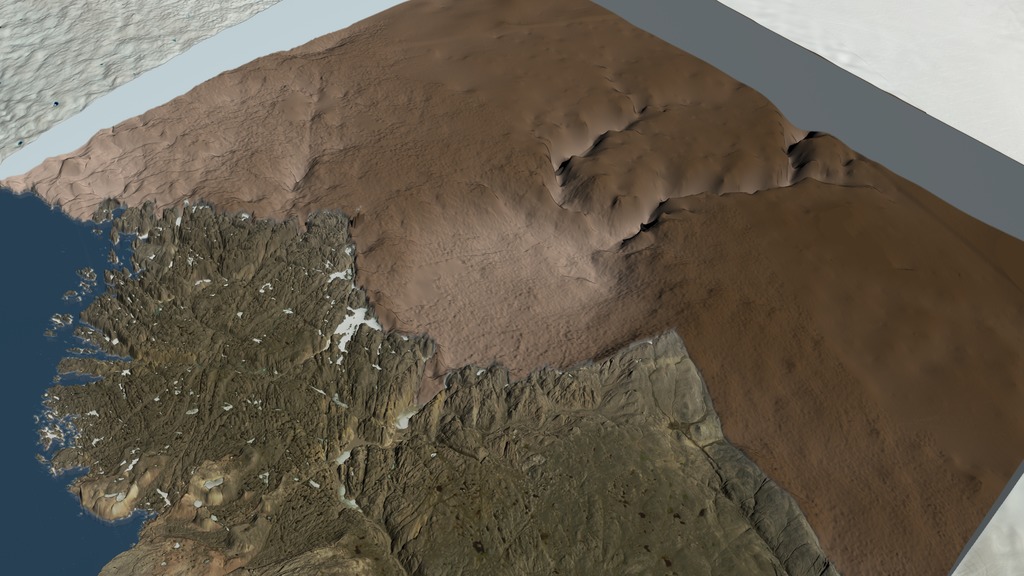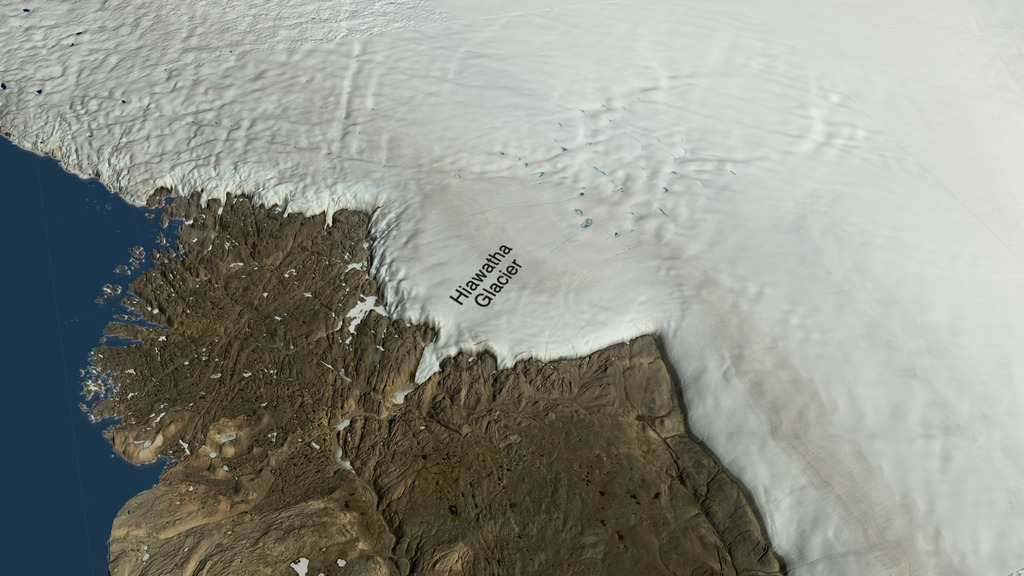Massive Crater Discovered under Greenland Ice
It took the combined efforts of an international team of scientists to unravel the mystery of the Hiawatha crater. This video shows how that discovery came together.
Complete transcript available.
An international team of researchers that includes a NASA glaciologist has discovered a 19-mile-wide meteorite impact crater hiding beneath more than half a mile of ice in northwest Greenland. This is the first impact crater of any size ever found under the polar ice sheets.
The group, led by researchers from the Centre for GeoGenetics at the Natural History Museum of Denmark, University of Copenhagen, worked for the past three years to verify their discovery, which was initially made in 2015 using NASA data. Their finding is described in a study published on Nov. 14 in the journal Science Advances.
The crater is roughly a thousand feet deep and more than 19 miles in diameter, encompassing an area slightly larger than that comprised inside the Capital Beltway around Washington, D.C. Its dimensions place it among the 25 largest impact craters on Earth. The crater formed when an iron meteorite more than half a mile wide smashed into northwest Greenland – but the timing of when the event happened remains a key question and one the researchers want to answer next. The authors put the range between less than 3 million years ago and as recently as less than 13,000 years ago. The resulting depression has since been covered by ice.
This narrated video outlines the discovery and includes data visualizations which can be found here: https://svs.gsfc.nasa.gov/4572
Footage and co-production courtesy of the National History Museum of Denmark/University of Copenhagen, the Underground Channel, and the Alfred Wegener Institute.
Music credit: "Timelapse Variations - Remixed." Natalie Draper, Composer. Original recording: Symphony Number One, SNOtone Records. Dan Rorke, Audio Engineer. Jordan Smith, Music Director.
The conceptual animations showing the meteor's approach, impact, and aftermath can be found below.
An artist's rendition of what the meteor may have looked like as it approached Earth. Credit: NASA/Brian Monroe.
An artist's rendition of the light from the approaching meteor reflecting over the Greenland Ice Sheet. Credit: NASA/Brian Monroe.
An artist's rendition of the impact of the meteor into the Greenland Ice Sheet and bedrock below. Credit: NASA/Brian Monroe.
An artist's rendition of the hypothesized spread of freshwater into the north Atlantic, resulting from the impact of a meteor on the Greenland Ice Sheet and subsequent melting of great quantities of ice. Credit: NASA/Brian Monroe.

Two views of the Hiawatha crater region, one covered by the Greenland Ice Sheet, and the second showing the topography of the rock beneath the ice sheet, including the crater. NASA's Goddard Space Flight Center/Cindy Starr

A Landsat satellite mosaic of the Hiawatha Glacier region.
Credits
Please give credit for this item to:
NASA's Goddard Space Flight Center
-
Visualizer
- Cindy Starr (Global Science and Technology, Inc.)
-
Animator
- Brian Monroe (USRA)
-
Producer
- Jefferson Beck (USRA)
-
Scientist
- Joe MacGregor (NASA/GSFC)
-
Writers
- Joe MacGregor (NASA/GSFC)
- Jefferson Beck (USRA)
- Maria-Jose Vinas Garcia (Telophase)
-
Narrator
- Jefferson Beck (USRA)
-
Music composer
- Natalie Draper (Syracuse University Setnor School of Music)
-
Art director
- Michael Lentz (USRA)
Release date
This page was originally published on Wednesday, November 14, 2018.
This page was last updated on Monday, January 6, 2025 at 1:32 AM EST.

